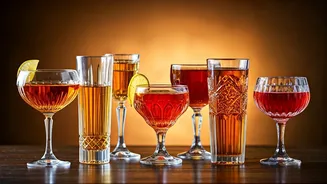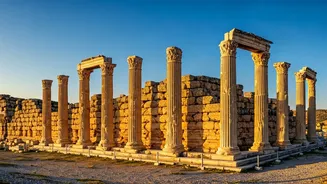Beyond Ordinary Beverages
The world offers an astounding array of alcoholic drinks, extending far beyond the usual beer and wine. These unusual beverages often mirror a region's
unique climate, available ingredients, and cultural heritage. They might include elements you wouldn't typically associate with alcoholic beverages, such as unusual fruits, herbs, or even insects. These drinks aren't just beverages; they are often deeply woven into local traditions and celebrations, reflecting a people's history and creativity. They provide an insight into various cultures, offering a unique and memorable tasting experience.
Balut's Boozy Cousin
Starting our journey, we encounter a beverage that's not for the faint of heart: the Cambodian 'balut' beer. While 'balut' is a Southeast Asian delicacy of a developing duck embryo, the beer, sometimes referred to as 'balut beer', captures the essence of this unusual food. The fermentation process includes the use of rice and sometimes fruits, which then takes the taste to a level of distinctiveness. This unique beverage is not just a drink; it's a window into the cultural norms of Cambodia, where even the most adventurous food and drink combinations are celebrated, creating an unforgettable experience for those brave enough to try it.
The Mezcal Mystery
Next, let's explore Mexico's renowned Mezcal. This spirit, made from the agave plant, often features a unique ingredient: a worm. The worm, actually a caterpillar, is added during the bottling process and is believed to enhance the flavor. Although the tradition's origins are debated, it adds to Mezcal's mystique. Mezcal's production is rooted in centuries-old traditions, reflecting the landscape and cultural values of the Mexican people. This drink demonstrates how local ingredients, combined with time-honored techniques, can create a distinctive and memorable experience for adventurous drinkers.
Chicha: Andean Tradition
Moving to South America, we discover Chicha, a traditional drink made from fermented maize. Chicha's origins trace back to the ancient Andean civilizations, where it held both ceremonial and social significance. Its preparation methods, varying across regions, showcase the local techniques. This beverage isn't just a drink; it symbolizes history and community, from the Andes to other areas in South America. Chicha demonstrates how a simple grain can transform into a central part of cultural identity, reflecting the ingenuity and resourcefulness of ancient societies.
The Korean Makgeolli
In South Korea, Makgeolli stands as a testament to the nation's rich brewing culture. This unfiltered rice wine has a cloudy appearance and a slightly sweet, tangy taste, setting it apart from other alcoholic beverages. For many generations, Makgeolli has played a central role in Korean festivities, offering a taste of tradition in every sip. Today, Makgeolli is experiencing a revival, capturing the hearts of both older and younger generations. This widespread popularity reflects a broader trend of rediscovering and appreciating ancestral customs within modern Korean society.
The Snake Wine's Bite
Snake wine is an East Asian beverage that combines alcohol with a whole snake. The snake, usually venomous, is left to steep in rice wine, where it infuses its essence into the liquid. It's believed to have medicinal properties in traditional practices. This beverage isn't merely a drink, but a reflection of the East Asian beliefs in the powers of natural remedies. Snake wine reflects the cultural values that honor the animal kingdom, where a simple ingredient can be integrated to create a concoction that is highly treasured for its unique flavors and supposed health benefits.
Kava's Social Brew
Finally, we encounter Kava, a traditional drink from the Pacific Islands, made from the roots of the kava plant. This earthy-tasting beverage is known for its relaxing effects. Kava's role in the Pacific Islands is much more than just a drink; it's central to communal gatherings, rituals, and the creation of strong social bonds. The drinking of Kava often involves intricate ceremonies. This practice highlights the ways in which a beverage can unite communities and embody cultural values, reinforcing the importance of social harmony and respect for ancient traditions.













